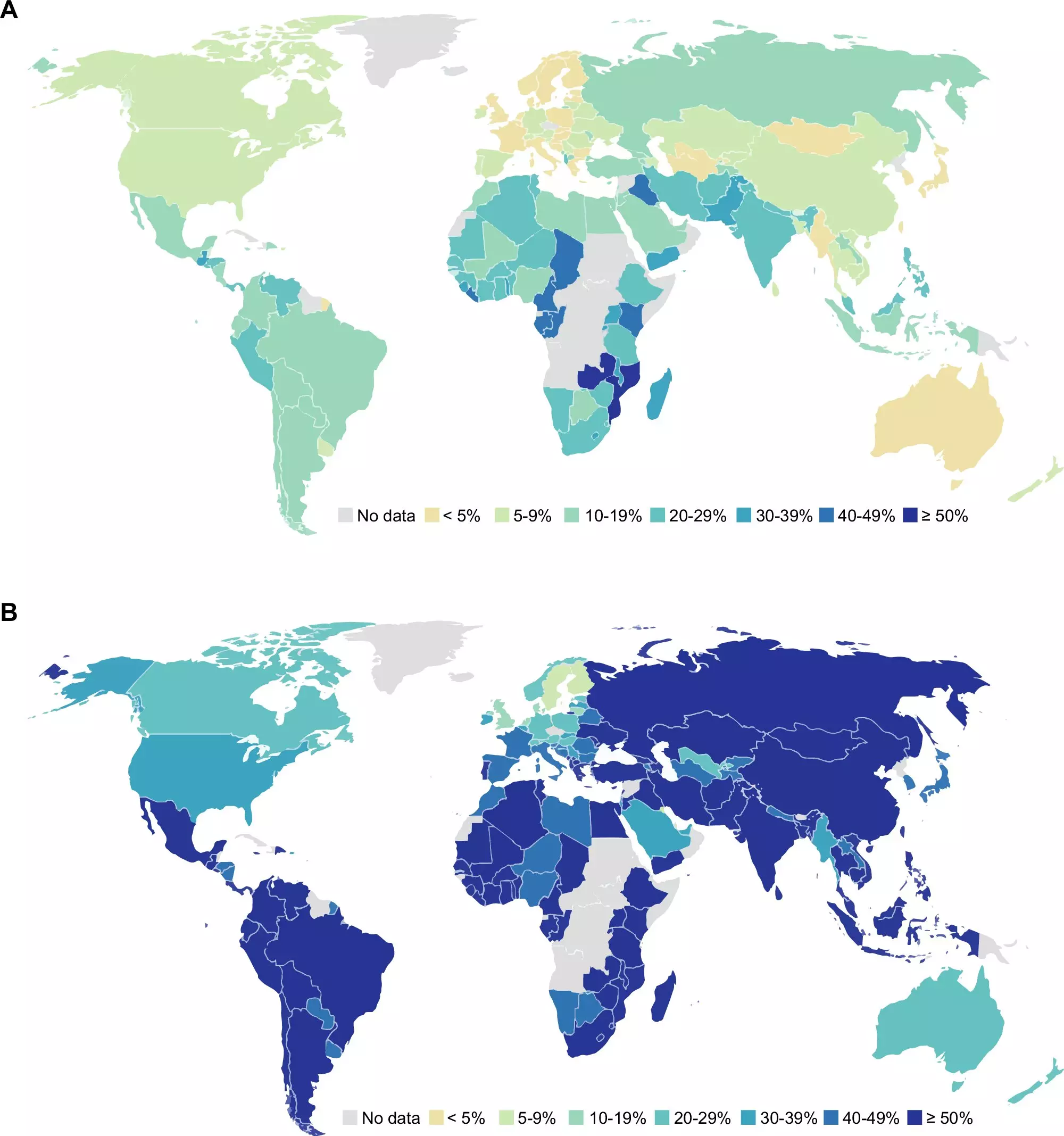A recent international study has underscored a troubling sentiment: over half of the adults surveyed globally believe they will suffer serious harm due to their drinking water in the coming two years. This alarming finding, which stems from research conducted by experts from Northwestern University and the University of North Carolina at Chapel Hill, sheds light on the pervasive crisis of trust surrounding water safety. Published in the esteemed journal Nature Communications, the study titled “Self-reported anticipated harm from drinking water across 141 countries” reflects a grim reality that transcends geographical boundaries and socioeconomic statuses.
The researchers gathered data from 148,585 adults across 141 countries, derived from the 2019 Lloyd’s Register Foundation World Risk Poll. Among various metrics, they discovered that perceptions of drinking water safety are alarmingly low, even in regions where the water quality conforms to established safety standards. This disconnection between reality and perception has serious implications for individual health, nutrition, and overall psychological well-being.
Sera Young, professor of anthropology and global health at Northwestern University and the lead author of the study, emphasized that distrust in water quality impacts behaviors in profound ways. For instance, individuals who question the safety of their tap water tend to gravitate towards more expensive and environmentally detrimental alternatives like bottled water. This not only strains personal finances but also exacerbates health problems, as consuming sugary drinks or heavily processed foods becomes a substitute for safe drinking water.
“Fear of unsafe drinking water can drive mental health concerns, too,” Young notes, recognizing a tangible link between mistrust and increased instances of psychological stress, anxiety, and even depression. The interconnection between a perceived lack of water safety and its effects on both physical and mental health creates a multi-faceted challenge that requires urgent attention.
The research identified key demographics that persistently exhibit a higher anticipation of harm from drinking water. Women, urban residents, individuals with higher education levels, and those experiencing economic hardships are more likely to express concern about the safety of their drinking water. Interestingly, perceptions of governmental corruption emerged as a significant predictor of anticipated harm, often overshadowing traditional measures such as infrastructure quality or national income levels. This statistic paints a sobering picture: the faith in governmental integrity directly influences how citizens perceive their access to safe water.
Even in developed nations like the United States, where infrastructure is generally reliable, the data revealed that 39% of participants anticipated serious harm from their drinking water. This statistic underscores the point that safe drinking water is not merely a matter of availability but also of public reassurance and education.
One of the core difficulties in addressing concerns regarding water safety is that many contaminants are difficult—if not impossible—to detect without appropriate testing. Factors such as visibility, odor, and taste can mislead individuals regarding the true safety of their drinking water. Consequently, many people base their understanding of water quality on anecdotal experiences, media narratives, or ingrained cultural beliefs, often leading to misinformed decisions.
Young poignantly highlights that sometimes such mistrust is justified, recalling the plight of Flint, Michigan, where residents accurately sensed danger in their water supply. Thus, it is crucial for authorities to restore faith in public water systems through proactive communication and testing.
The study outlines actionable recommendations for governmental bodies and agencies aimed at counteracting the growing distrust in drinking water safety. These actions encompass improving water testing and transparency by providing accessible results to the public, replacing aging pipelines with lead-containing materials, and facilitating the distribution of home filtration systems.
Moreover, enhanced public education surrounding water safety and the risks of contamination can empower individuals with the knowledge they need to make informed choices about their water consumption. “We cannot overlook the urgent need to restore public confidence in our water systems,” emphasizes Joshua Miller, co-author of the study, reflecting the consensus among researchers regarding the importance of clear communication and infrastructural integrity.
Aaron Salzberg, director of the Water Institute, captures the essence of the urgency: “This research holds the potential to catalyze greater political will and prioritization of safe water services in national agendas.” If we aim for universal access to safe drinking water, fostering trust is paramount. Public health can only thrive when communities are not just physically safe, but also psychologically reassured about the very resources they rely on for survival.


Leave a Reply